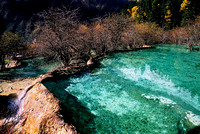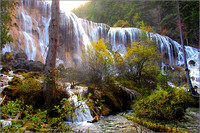Located at the southwest region of Mainland China, people often refer to Sichuan Province as “the heaven-endowed land” (or “the Land of Abundance”) . The terrain of Sichuan Province varies in elevation, sloping from west to east and is divided into two sections—Western Plateau of Sichuan and the Sichuan Basin. The western plateau is one of the combinative sections of the Qinghai-Tibet Plateau, with an average altitude of more than 4,000 meters. Low hillocks and plains dominate the Sichuan Basin. Rivers in the province mainly include the Yangtze River and its tributaries. The basin in east Sichuan belongs to subtropical and humid monsoon climate and the western part belongs to subtropical and plateau climate.
The province is China’s third most populous province, trailing Henan (92.56 million) and Shandong (90.79 million). It is known as the “paradise in China or a land of abundance” or “heavenly-endowed land” because of the rich natural resources and beautiful scenery. The province is the home to the national treasure—the Giant Panda. The province boasts a lot of mountains, rivers and historic relics. UNESCO inscribed Jiuzhaigou, Huanglong scenic area, Mount Emei with the Leshan’s Giant Buddha, and Mount Qingcheng-Dujiangyan Irrigation Project on the World Heritage List in 1992, 1996 and 2000 respectively. [Source: Wikipedia]
The province is China’s third most populous province, trailing Henan (92.56 million) and Shandong (90.79 million). It is known as the “paradise in China or a land of abundance” or “heavenly-endowed land” because of the rich natural resources and beautiful scenery. The province is the home to the national treasure—the Giant Panda. The province boasts a lot of mountains, rivers and historic relics. UNESCO inscribed Jiuzhaigou, Huanglong scenic area, Mount Emei with the Leshan’s Giant Buddha, and Mount Qingcheng-Dujiangyan Irrigation Project on the World Heritage List in 1992, 1996 and 2000 respectively. [Source: Wikipedia]
© Weng Photography






